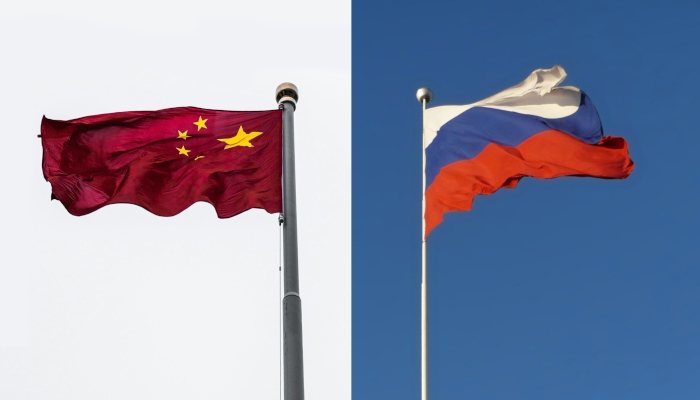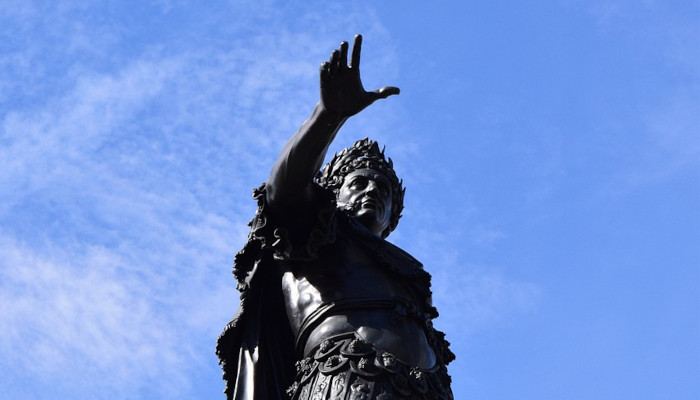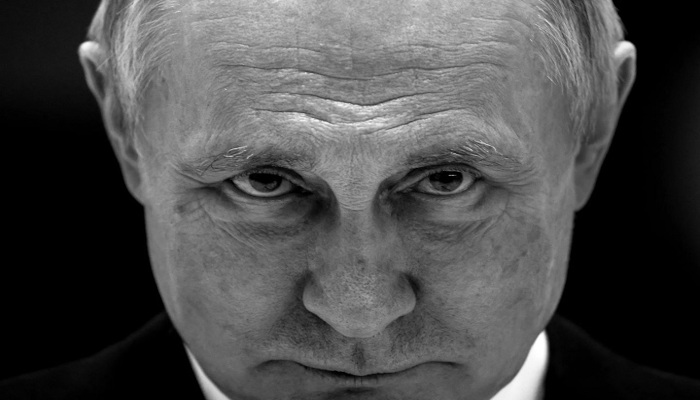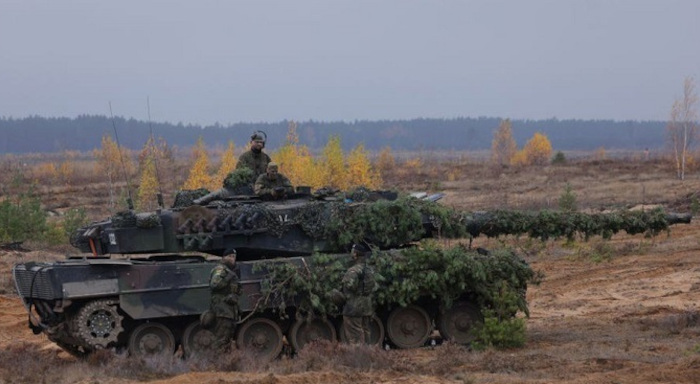
The United States and its allies are concerned about the informal but strong strategic alliance that has taken shape in recent years between China and Russia and which has become more evident after the invasion of Ukraine in February 2022. Since then, Beijing has provided staunch diplomatic and economic support to Moscow but stopped short of supplying the Russian Army with weapons as it was initially feared in the West.
Those believing in the alliance quote the numerous and friendly bilateral meetings between Chinese President Xi Jinping and Russian President Vladimir Putin and the high-level meetings between Chinese and Russian militaries.
Can we conclude that Russia and China consider one another friends for good and bad times and that the U.S.A. and its allies will face such a formidable adversary, and eventually enemy, during this troublesome century? If so, the adversary block of countries needs to plan their diplomatic, military, and economic responses and prepare for the worst. An assessment of the strength of this bond would also help gauge the true effectiveness of the Shanghai Cooperation Organization (S.C.O.), the BRICS, and the Belt and Road Initiative (B.R.I.), where the two are major “stakeholders.”
We doubt the alliance is as solid as it looks from the outside. It’s built on fault lines that cannot be eliminated. The two share several characteristics and political views, but that may not be enough.
Indeed, China and Russia share a governance model commonly defined as authoritarian. Thus, they share common negative views on liberal democracies, the form of government of most adversaries. They both believe that Western democratic models and societies are undergoing a rapid and hopeless process of decadence. Fresh in their mind are the 6 January 2020 attack on the U.S.U.S. Congress, the mess left by the U.S.U.S. in Iraq, the betrayal of their Kurds allies, and the sudden and clumsy withdrawal from Afghanistan. More deeply, both Moscow and Beijing observe the relevance attached by democracies to human rights issues, from civil and political liberties to the rights of minorities and LGBT+, which for them is a sign of an unequivocal weakness. Whether in Russia or China, the attitude towards freedom of the press, political dissidents, and N.G.O.s bear striking similarities: the etiquette of “foreign agent” (another word for the old Soviet-era “enemy of the State”) is quickly applied to those citizens or organizations that do not meet stringent government criteria or simply express criticism on State’s matters.
China and Russia also share similarities in the economic model, even if Russia is a much smaller economy and essentially an exporter of raw materials (basically gas and oil). At the same time, China is still a second-world economy and produces much of what we, and Russia, consume. In essence, their economies are similar. Both are examples of a hybrid form of capitalism whereby financial surveillance authorities and the judiciary are not independent, and no space is left for a free market and the rule of law. In such an environment, State firms are privileged irrespective of the viability of their economic
models, and entrepreneurs without “connections” cannot thrive.
Russia and China share an ancient feeling of being encircled by enemies.
In Russia, this feeling dates back to the very origins of Russia. It started at the time of Kievan Rus’ in the first half of the XIII century. In a matter of few years, Kievan Rus’ was attacked by the Teutonic Knights from the West, the Swedes from the North, and the Mongols of the Golden Horde from the East. It was the end of the first Russian political experiment. Much later, Napoleon invaded Russia in 1812, and in 1941 Nazi Germany flooded the planes of the Soviet Union. It was these last two invasions that contributed to building in Russia’s minds a bridge between earlier and following aggressions, leaving a deep scar in national memory that passed on from generation to generation. After WWII, the Soviet Union, to some degree understandably – but with gloomy consequences for those countries involved – worked hard to build a buffer zone at the country’s borders to allow time to mobilize and prepare in case of foreign aggression. Time for mobilization is a key element in a vast empire unable to count on natural barriers and thus exposed to easy crossing by foreign armies. More recently, in the late nineties, the feeling of encirclement grew exponentially with the enlargement of E.U.E.U. and NATO, which went as far as incorporating former Warsaw Pact members in successive waves.
In China, this feeling also dates back to the country’s origins, but somehow is less understandable. In the remote past, nomadic or semi-nomadic tribes from the deserts and the steppe, whether the Xiongnu or the Jurchen, frequently raided the south’s peasant peoples. Much later, the Mongols started with incursions and followed with invasions that impacted China forever by bringing a Mongol emperor to sit on the Dragon Throne. In more recent times, China’s long borders and the fact that its minorities (from the Hui to Uyghurs and from the Tibetans to the Mongols) are settled in border areas contribute to making Beijing very sensitive to any development, which may materialize on the other side of the frontier. Lately, China has grown more concerned about encirclement, but this time, it is somehow a fear of its own making. In fact, in a decade ranging from the Beijing Olympic Games to the coming to power of Xi Jinping, China started to be bolder abroad, ending the low-profile stance it had followed for more than thirty years. Indeed, Beijing became more assertive on the South China Sea, gave a deadline for Taiwan’s reunification, increased exponentially the budget of the Ministry of Defense, and allowed the Ministry of Foreign Affairs (M.F.A.) to speak more bluntly. All these actions convinced China’s neighbors (particularly the Philippines, Vietnam, Indonesia, Japan, South Korea, and Australia) to rearm and rethink their alliances against China. It was not Beijing’s wisest moment. China’s neighbors might have gone along with carrying on business as usual. They had known China for a long time and had always traded with it either as vassal states or as partners. In this new scenario, they are now pushed to lean towards the U.S.A., which not only is an outsider with its downsides but has left sour memories in countries like Vietnam, Cambodia, and Laos.
So far, some elements bond China and Russia together, but let’s see what sets them apart, which is less obvious.
About the economy, Putin’s decision to base Russia’s hopes for future growth and prosperity on a State-controlled model based on extracting resources for export rather than a more diversified economic model based on conceiving and realizing products sought after in the West reduces Russia’s future capacity to remain a global superpower. Meanwhile, China, building up on millennia of trade, hard work, and entrepreneurship on the bright side and state subsidies and intellectual property theft on the dark side, has built an economy that has produced growth at a rhythm never seen in history. Yes, the model is now facing severe headwinds, but that direction may reverse suddenly. China is still the 2 nd world economy with huge foreign currency reserves, while Russia is the 11 th . Moscow perceives this imbalance and is aware that China’s enormous productive capacity and surplus cannot be absorbed internally. It must be invested abroad with unpredictable consequences on the economies of its neighbors, especially Central Asian ones. Furthermore, Russia sees part of these massive financial resources being transformed into the modernization of the P.L.A. It cannot be happy about it, as the U.S. is far away, but China and Russia share an approximately 4.300 km long border.
Borders is another issue that separates the two and, maybe, the most significant. China’s northeast (Dong Bei) was once much bigger than it is today, as it used to reach far into the northern Siberian planes. In the nineteenth century, at the time, emperor Xianfeng was fully engaged in repressing the Taiping rebellion and in dealing with the British and French demands for land concessions ensuing from the Opium Wars; he could not also face the Russians. Thus, Emperor Alexander II could take from Xianfeng almost 400.000 square miles of his empire, a loss accepted later by China through two treaties, one signed at Aigun in
1858 and the second in Peking in 1860. A territory more or less equivalent to France and Germany, including the Russian cities of Vladivostok and Khabarovsk and the island of Sakhalin, was gone. One century later, a brief and less bloody war was also fought in this area, precisely by the Ussuri River in 1969. In 2005, the Sino-Russian boundary was agreed upon; thus, the issue was settled once and for all. True, but not entirely true. Chinese, who have a stronger sense of history than we have in the West, have not forgotten that their ancestors came not only from the Yellow River basin in the south but also from these
northern territories, now under Russia. The Jurchen, Tungus, or in other words, the Machu, who gave origin to the last Qing dynasty, were living in those lands, so, by adopting a historical perspective, they could be considered by China “occupied” territories. That is not a trivial matter if one believes, besides the size of the loss, that Vladivostok is the largest Russian naval base in the Pacific and that, on the Siberian side of the border, the Russian population hovers around 23 million, while the Chinese adjacent North East (Jilin, Liaoning, Heilongjiang provinces) around 110 million. The pressure from south to North and the risks of having a military installation of such significance so close to a potential enemy is not lost on the Russians.
Finally, Moscow played a role 1921 in helping Mongolia become independent when the Red Army helped Mongolian revolutionaries defeat the Chinese army representing the Beiyang government in Beijing. Mongolia is the place of origin of another of its dynasties, the Yuan, and was considered by Qing China a buffer zone to keep an advancing and aggressive Russia at bay.
Still, on borders and sphere of influence, it has to be recalled that since the fall of the Soviet Union, China, and Russia have looked with growing interest at Central Asian countries, but this interest has grown exponentially in the last twenty years, an attention that was more noticeable on the part of China. Moscow had always had connections, eyes, and ears in these countries since it acquired them during the XIX century. China now looks at Central Asian countries to exploit their resources (particularly gas, oil, copper, and uranium) and develop trade. Central Asian countries instead look forward to technology transfer and investments. But there is another relevant aspect as of lately. China’s presence seems to be
giving the five countries a reassuring message should one of three scenarios materialize: 1) in case of Russian aggression (a possibility that cannot be excluded after the war against Ukraine); 2) in case of a Russian State collapse which could lead to some remote provinces separating from the Russian Federation and going for themselves thus creating disorders at Central Asian countries’ borders; or, 3) if Russia is unable to provide the security umbrella it had provided for decades, which could be the case now that Moscow is fully involved in Ukraine.
China’s interest in the five Central Asian countries is in line with Beijing’s attention to Afghanistan, where it has, for at least a decade, reinforced its diplomatic and trade presence with several objectives: 1) have Afghan support against extremism in China’s Turkestan (the Xinjiang Autonomous region); 2) control and repress the flow of Afghan Opium in China via Pakistan; and, 3) exploit Kabul’s natural resources, ncluding lithium, copper, cobalt and nickel. Russia, which fought a bloody war to keep Afghanistan in its sphere of influence from 1979 to 1989, sees its courtyard contended by a powerful and economically more attractive China and surely does not like it.
The core territory of China itself has been the victim of Russian aggression, and it is again a matter of how much weight has history on today’s foreign affairs. Officials in the Chinese government, let alone students, are taught that Tsarist Russia was one of the participants in the Eight Nations Alliance that, in 1900, sent a relatively small but well-armed and determined military detachment to Beijing to crush the Boxer rebellion. Among this Eight Nations Alliance, Russia had moreover the second largest contingent. Russian Cossacks annihilated the Manchu bannermen, looted villages, and burned them down. This was the last blow to China’s Qing dynasty, and it is still remembered today by China both as a blatant interference in internal affairs and as a humiliation.
Lastly, among the issues that separate the two, there is one other aspect, sensitive and almost unspeakable, which contributes to distance China from Russia: race. Through centuries, if not millennia, the Chinese people looked at other peoples, including Russians, as barbarians, with no culture, unsophisticated lifestyles, and without a system of rules. China’s suspicion towards Christianity (the main religion of their northern neighbor) does not help either. Conversely, Russians used to look at the Chinese as if they were Mongols of the steppe or, in their language, Tartars of the same or similar kind of the Golden Horde that brought devastation from the Gobi Desert to the borders of Poland. Such views and inner beliefs may all be wrong, but somehow, they may continue to have some weight today, as incredible as it may sound in the XXI century.
The two countries meet and issue statements of strategic entente and eternal friendship, but it is most likely that they both harbor several reservations. In the Russian mindset, the idea that Great Russia is not so great anymore and that from world power, it is becoming a regional power, whereas China is recognized by many as the new world superpower at the level of the U.S.A. is a painful and annoying thought. With what eyes do Russians look at their neighbor who is stealing from them their right place in the front row of the international arena? We do not know exactly, but we can make an effort to imagine it. We can try to imagine that China, on the contrary, is looking at his ally with condescending eyes and even satisfaction, thinking that not only has it done better than the former barbarian, white, Christian, and colonialist power but also better than the former big U.S.S.R. brother who, until the 1962 Sino-Russian split, had been lecturing China on how to develop socially and economically. Is true understanding and friendship between two such different countries possible and lasting? What unites them, the animosity towards the U.S. and its allies, may not be so decisive as to what separates them. If it is true, as it seems, that among the U.S. top strategic priorities vis-a-vis China, there should be the objective to divide Russia from China, the U.S., together with its allies, should work to widen the differences between the two and minimize what bonds them. Now that there is joint agreement in the West that de-risking is the right approach toward an increasingly assertive China, this repositioning work should continue by rethinking the stance liberal democracies should take toward Russia. It should have been done much before, possibly a decade ago, as now the task has been made extremely difficult by the Ukraine conflict, but it is not impossible and, most of all, cannot be postponed further.
finis









